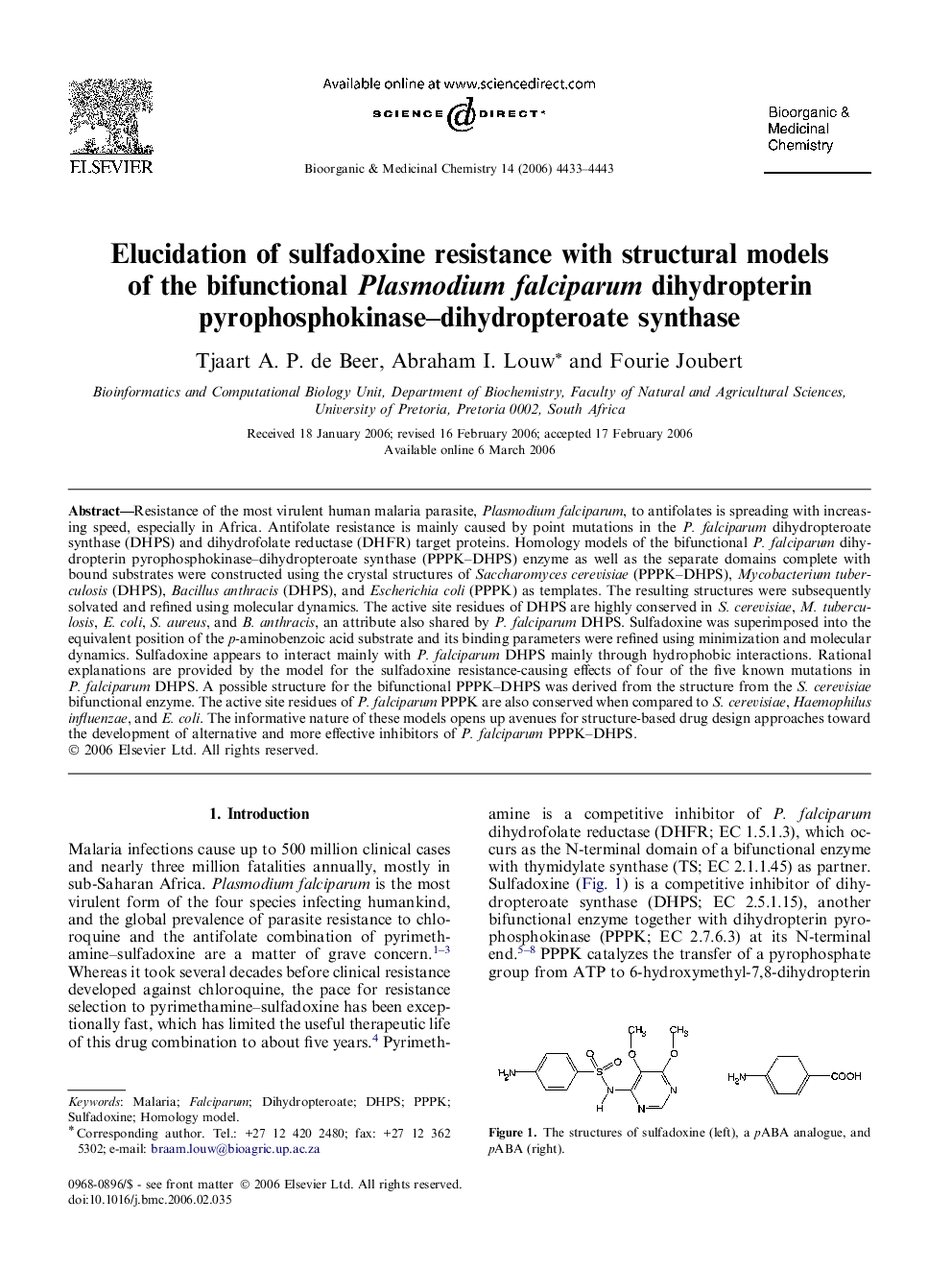| کد مقاله | کد نشریه | سال انتشار | مقاله انگلیسی | نسخه تمام متن |
|---|---|---|---|---|
| 1362444 | 981488 | 2006 | 11 صفحه PDF | دانلود رایگان |

Resistance of the most virulent human malaria parasite, Plasmodium falciparum, to antifolates is spreading with increasing speed, especially in Africa. Antifolate resistance is mainly caused by point mutations in the P. falciparum dihydropteroate synthase (DHPS) and dihydrofolate reductase (DHFR) target proteins. Homology models of the bifunctional P. falciparum dihydropterin pyrophosphokinase–dihydropteroate synthase (PPPK–DHPS) enzyme as well as the separate domains complete with bound substrates were constructed using the crystal structures of Saccharomyces cerevisiae (PPPK–DHPS), Mycobacterium tuberculosis (DHPS), Bacillus anthracis (DHPS), and Escherichia coli (PPPK) as templates. The resulting structures were subsequently solvated and refined using molecular dynamics. The active site residues of DHPS are highly conserved in S. cerevisiae, M. tuberculosis, E. coli, S. aureus, and B. anthracis, an attribute also shared by P. falciparum DHPS. Sulfadoxine was superimposed into the equivalent position of the p-aminobenzoic acid substrate and its binding parameters were refined using minimization and molecular dynamics. Sulfadoxine appears to interact mainly with P. falciparum DHPS mainly through hydrophobic interactions. Rational explanations are provided by the model for the sulfadoxine resistance-causing effects of four of the five known mutations in P. falciparum DHPS. A possible structure for the bifunctional PPPK–DHPS was derived from the structure from the S. cerevisiae bifunctional enzyme. The active site residues of P. falciparum PPPK are also conserved when compared to S. cerevisiae, Haemophilus influenzae, and E. coli. The informative nature of these models opens up avenues for structure-based drug design approaches toward the development of alternative and more effective inhibitors of P. falciparum PPPK–DHPS.
Figure optionsDownload as PowerPoint slide
Journal: Bioorganic & Medicinal Chemistry - Volume 14, Issue 13, 1 July 2006, Pages 4433–4443